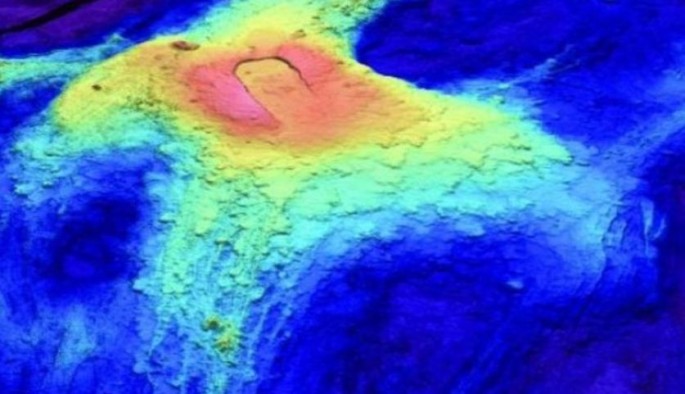The Axial Seamount, a 1,100 meter high submarine volcano 300 miles off the coast of Oregon, is apparently erupting but poses no quake or tsunami danger to the state.
Seismologists said the seamount, also called the Axial Volcano, triggered over 8,000 mild earthquakes on April 24 and caused the seafloor to drop by some two meters. They said the volcano triggered hundreds of small quakes over the past five months.
The earthquakes are being caused by magma forcing its way through the rock, researchers said.
They noted this series of eruptions pose no threat to coastal residents since the earthquakes are small quakes mostly magnitude 1 or 2. Seafloor movements have also been relatively gradual so there's no danger of a destructive tsunami swamping Oregon's coastal areas, according to Oregon Live.
The Axial Seamount is the youngest volcano and is the most active submarine volcano in the Cobb-Eickelberg Seamount chain. It features an unusual rectangular caldera and its sides are pockmarked by fissures, ventsand pit craters up to 100 meters deep.
Bill Chadwick, an Oregon State University geologist, said the eruption of the Axial Seamount isn't a surprise. He predicted the eruption would happen this year and predicted a previous eruption, in 2011.
Chadwick said predicting when seamounts will erupt is relatively simpler than predicting the eruption of terrestrial volcanoes
On the other hand, terrestrial volcanoes have thicker crusts and are influenced by large earthquakes and other nearby volcanoes, so predicting their eruptions are more difficult, said Chadwick.
"Volcanoes like this (the Axsial Seamount) have very fluid magma that is supplied from below, seemingly continuously," said Chadwick.
"It's like a balloon filling with air. The seafloor actually rises -- that's what we're measuring."
Chadwick and other scientists watch the activity at Axial Seamount in real-time via a cable on the seafloor. The cable is part of the Ocean Observatories Initiative funded by the National Science Foundation.



























